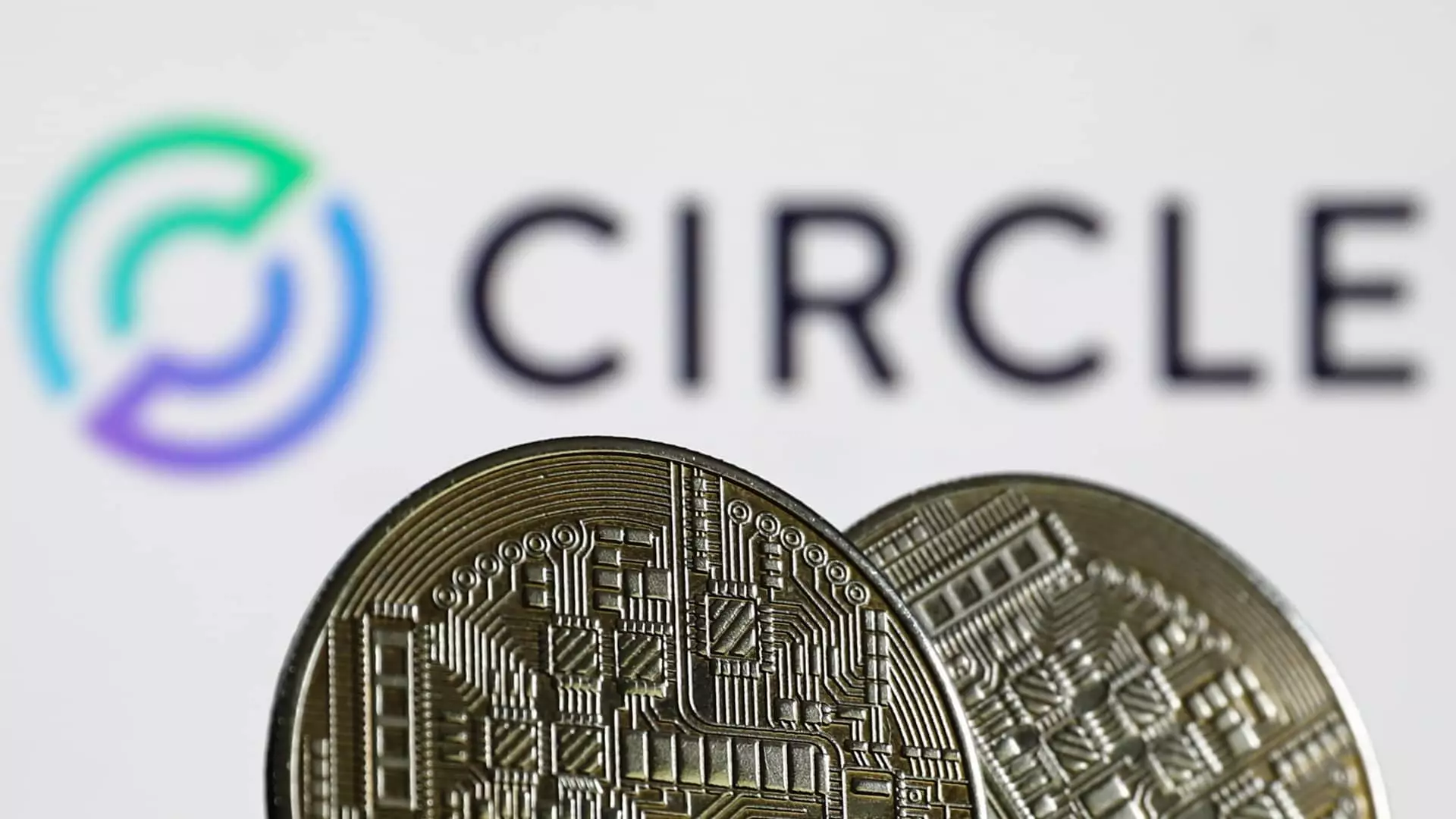Circle, the pioneering company behind the USDC stablecoin, is embarking on a decisive path by initiating its long-anticipated initial public offering (IPO). Eyeing a substantial $624 million, the company is stepping onto the public stage with an estimated valuation of approximately $6 billion. This move is more than just a financial milestone; it symbolizes a possible paradigm shift in not just Circle’s journey, but also in the cryptocurrency landscape as a whole.
Under the stewardship of CEO Jeremy Allaire, this public offering represents a strategic moment for Circle. The intention to issue 24 million shares of Class A common stock—comprising both company shares and those from existing shareholders—highlights an ambitious roadmap, targeting a price range of $24 to $26 per share. Investors showing interest, such as Cathie Wood’s ARK Investment Management, asserting willingness to acquire $150 million of shares, emphasizes the profound anticipation engulfing Circle’s public debut. This could mark a critical juncture in cryptocurrency’s acceptance within mainstream finance.
The Ripple Effect on the Cryptocurrency Sector
The launch of Circle’s IPO extends beyond its confines, echoing through the corridors of the entire cryptocurrency sector. With USDC circulating at a staggering approximately $62 billion, constituting 27% of the overall stablecoin market, the implications of Circle’s action reverberate across financial markets. The stablecoin sector has exhibited formidable growth, fueled by increasing optimism regarding legislative advancements. Recent progress in the Senate towards establishing the first regulatory frameworks for stablecoins hints at a future where transformation in monetary operations could unfold.
Critics might argue that cryptocurrency, especially stablecoins like USDC, are mere tools of speculation or even instruments contributing to market volatility. However, USDC’s rise, especially juxtaposed with Tether’s slightly anemic growth, underscores a burgeoning confidence among investors. Circle’s pathway could pave the way for a more organized and legally compliant digital asset marketplace, significantly bolstering the potential for cryptocurrencies to function as genuine financial instruments rather than mere speculative assets.
The U.S. Dollar’s Digital Allies
Beneath the glamor of IPOs and public offerings lies a deeper narrative about the role of stablecoins, especially in preserving U.S. dollar dominance. The structural underpinnings of USDC, backed by U.S. government debt, underline the urgency institutions feel about maintaining the dollar’s global stature. With discussions ramping up regarding the dollar’s utility in foreign markets, stablecoins represent a modern tool for maintaining this supremacy. The ability to execute global transactions swiftly and with minimal friction paves the way for more inclusive financial systems.
Let’s not ignore the dynamic between Circle and Coinbase, a co-founder of USDC and a major conduit for its circulation. Their partnership, underscored by a 50% revenue-sharing agreement and Coinbase’s total control over interest generation from USDC transactions, raises essential questions about competition and cooperation in this nascent field. As Coinbase aims to position USDC as the leading stablecoin globally, observers must consider whether collaborations ultimately enhance the sector’s integrity or sow the seeds for monopolistic tendencies.
The Future of Digital Currency Dynamics
In the evolving landscape of digital currencies, stablecoins are transforming from mere trading tools into significant financial instruments for banks and financial technologies alike. The emphasis on USDC as a bridge for seamless cross-border transactions is becoming increasingly apparent. However, amid this growth, the trepidation around regulatory hurdles looms large. Circle’s decision to go public is not merely a financial maneuver; it encapsulates a broader narrative about the growing integration of cryptocurrency into our everyday financial structures.
The urgency for clear and comprehensive regulations surrounding stablecoins cannot be overstated. The conversation is shifting from whether to regulate cryptocurrencies to how they will be regulated. Policymakers need to navigate carefully, recognizing the delicate balance between fostering innovation and imposing restrictions that could stifle growth. Aspects of Circle’s IPO can serve as a litmus test for legislative frameworks that might emerge, underscoring the necessity for adaptive governance models that can keep pace with rapid technological advancements in this sphere.
In an era where digital finance is gaining unprecedented traction, Circle’s IPO may very well illuminate the path forward, opening up conversations that could redefine the essence of money in the digital age. As the cryptocurrency narrative unfolds, the implications of this shift extend far beyond balance sheets and stock market fluctuations; they touch the very fabric of economic freedom and financial inclusion.

